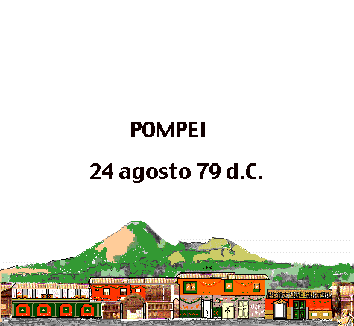
The animation shows the evolution of the 79 AD eruption of Vesuvius and its effects on Pompeii.
First a "Plinian" column forms and drops about 1.5 meters of tephra (mostly pumice clasts) on the city over a period of about twelve hours. The column then collapses as the eruption enters it "Peleean" phase. The colapsing column surges and flows over the city. The very hot and fast moving ground-hugging surge knocks down walls and kills anyone in its path immediately -- almost all of the bodies were found at the level of the top of the initial ash falls. Then the flow, which is only a few seconds behind the surge, dumps another two meters of debris over everything. Anyone still alive is killed quickly by breathing superheated air and gases. The first surge reached Pompeii within minutes of the collapse of the column. Pliny the younger, in Misenum at the north-west corner of the Bay of Naples, describes this cloud advancing quickly toward him across the water of the bay of Naples. But he was at the far edge of the flow and so did not succumb.
The animation shows an additional "pulse" -- the Plinian column
tries
to reform but then collapses again. This sequence was repeated
several
times: there were at least six surge/flow pair layers in
Herculaneum.
Click your browser's BACK icon to return to the
page
from which you came here.